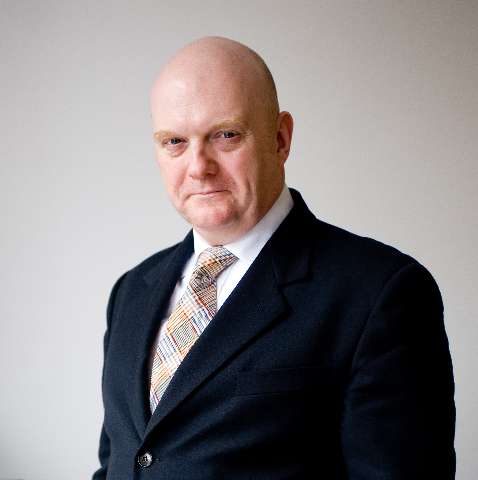Seeing The Nutcracker on the eve of entering March was a novel experience but Christmas is barely an issue in Christian Spuck’s inventive reimagining of this well-worn tale, simply referenced by smatterings of snow; the presents, of course (where would the Nutcracker doll come from, otherwise); and a brief glimpse, on the backdrop, of a giant bauble at the end of a fir tree branch.
The ubiquitous popularity of The Nutcracker has grown to become a part of the Christmas tradition with storylines that must suit family audiences and, in doing so, the ballet tradition has lost touch with the original fairy tale by E.T.A. Hoffmann. In a counter-intuitive coup, Spuck has returned to that original source at Ballett Zürich in order to make his own distinctive mark. With dramaturgical support from Michael Küster and Claus Spahn, lost aspects of that narrative – and Hoffmann’s original title of Nussknacker und Mausekönig – have been restored, with Tchaikovsky’s score rearranged to suit (including parts that are normally omitted). A last-minute emergency due to the indisposition of music director Paul Connelly was resolved through the late substitution of Yannis Pouspourikas, a conductor from Marseille, and the unusual orchestral arrangement worked remarkably well.
Spuck has dispensed with the traditional national dances of the second act, using the music for narrative purposes, so that for example the familiar melodies of the Chinese Dance take place in Act 1 as a pas de quatre for four princes in powdered wigs and frock-coats (without a Fu Manchu moustache in sight). Spuck has reawakened darker aspects of the Hoffmann narrative that had dropped out of popular consciousness, such as the inner tale of Princess Pirlipat and the Hard Nut, which had been omitted from the balletic interpretations of Petipa onwards. It provided Spuck with the opportunity to integrate Tchaikovsky’s overture into his choreographic text.
Much of this ballet’s charm is enriched by its diverse design idiosyncrasies. Just as the musical tapestry has been cut up and familiar melodies reordered to be used for different purposes, so the design is a patchwork of many influences. The opening scenario is a clown theatre with accordionist Ina Callejas in sight and motionless – as if an abandoned puppet – for twenty minutes before the show begins when she is joined by the two principal clowns (Yen Hang and Matthew Knight) who bring a Leitmotif of playful combat throughout the work, Hang’s spiky powdered wig puffing out white dust whenever she is lifted.
The ruffs worn by the clowns (Hang even has a ruff as a tutu) give an Elizabethan flavour within the general ideal of commedia dell’arte. The suitors for Princess Pirlipat (an enchanting, expressive performance by Giulia Tonelli) wear Georgian costumes; and Drosselmeyer (Dominik Slavkovsky channelling Johnny Depp into a mystical creation) is dressed as a Dickensian character in black top hat and long coat. The naughty brother Fritz (Daniel Mulligan) whizzed around on a skateboard, wearing hunting gear. Buki Shiff's eclectic costume designs aligned with other design qualities to suit the reconstructed story. This was a place of no particular time and of every era.
This ballet requires a lot of dancers and many are featured in solo roles and small groups. Spuck’s choreography expertly develops and identifies character, thus avoiding the potential pitfall of losing clarity through the expanded complexity of his narrative. It might help to understand something of the Princess Pirlipat subtext but I didn’t and I managed to embrace it with little difficulty. The final pas de deux for the central character of Marie (this ingénue role beautifully expressed by Michelle Willems) and the Nutcracker returned to the human form of Drosselmeyer’s nephew (an admirably versatile Alexander Jones) was utterly absorbing and it is fascinating how the choreographer achieved something refreshingly new from such well-used music.
Another of Spuck’s counter-intuitive achievements was to lose the freedom of having virtuoso dancing without narrative constraint, but nonetheless still bringing the same depth of strong and expansive dancing to tell the story, even with dancers’ wearing outlandish costumes. The “flowers” – led by a reluctantly alluring Inna Bilash – wore tutus of what seemed to be rigid plastic petals, and the ironically-named Zuckerfree (Sugar free) – a delightful performance by Rafaelle Queiroz – wore another circular tutu of rigid material, onto which sat numerous cupcakes that looked good enough to eat. It is an unusual association to make with any production of the Nutcracker but this is a surprisingly sexy ballet.
The two acts are uneven, the first being particularly long and the second comparatively short, and I didn’t feel that the Mouse King and his entourage got sufficiently established to merit their place in the title. Nonetheless, this is an exceptional addition to the conjoined legacy of Tchaikovsky, Petipa and Hoffmann. It has sparkle, wit, clarity and artistic invention that will repay many repeat viewings with joyful entertainment.


